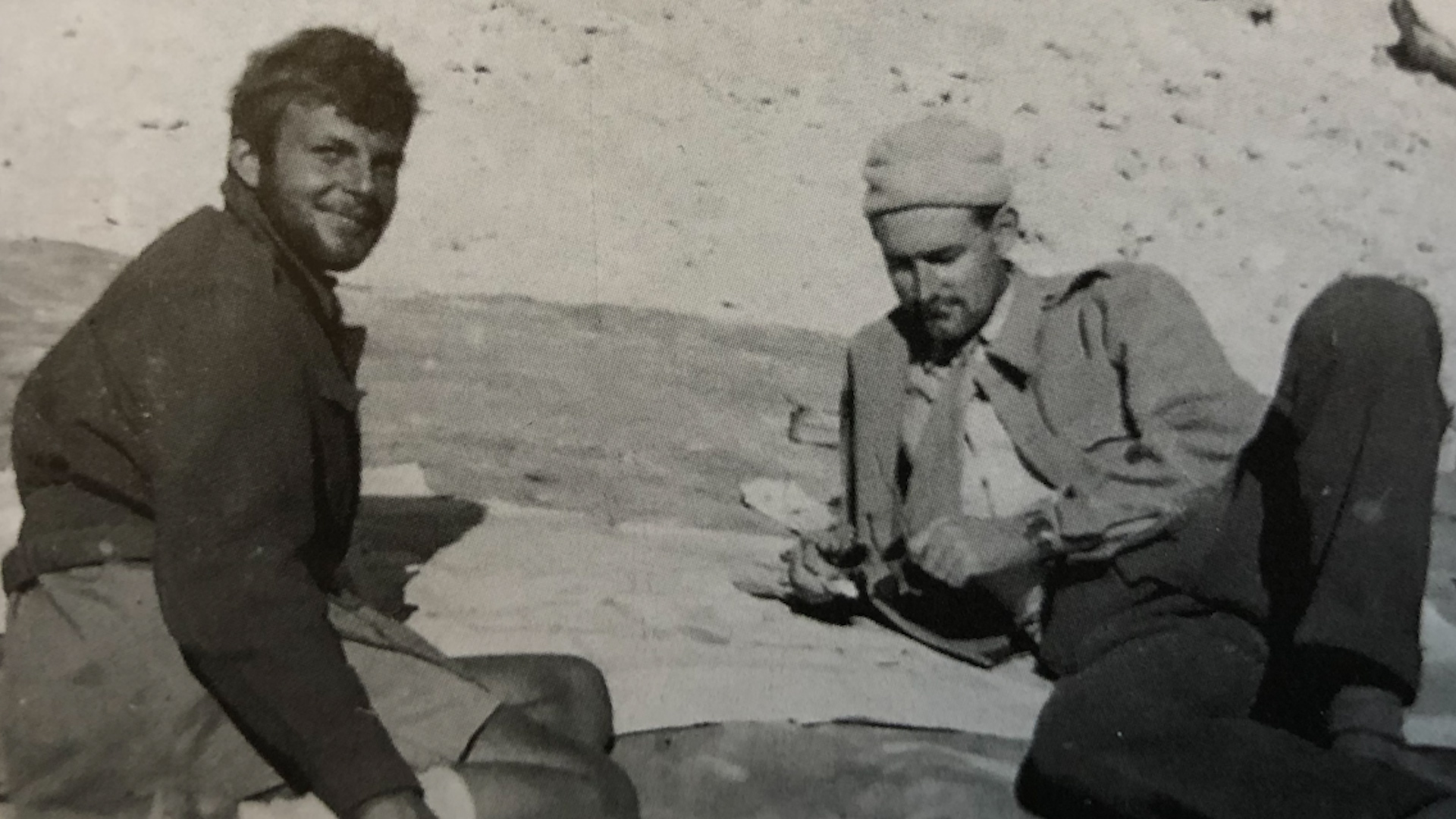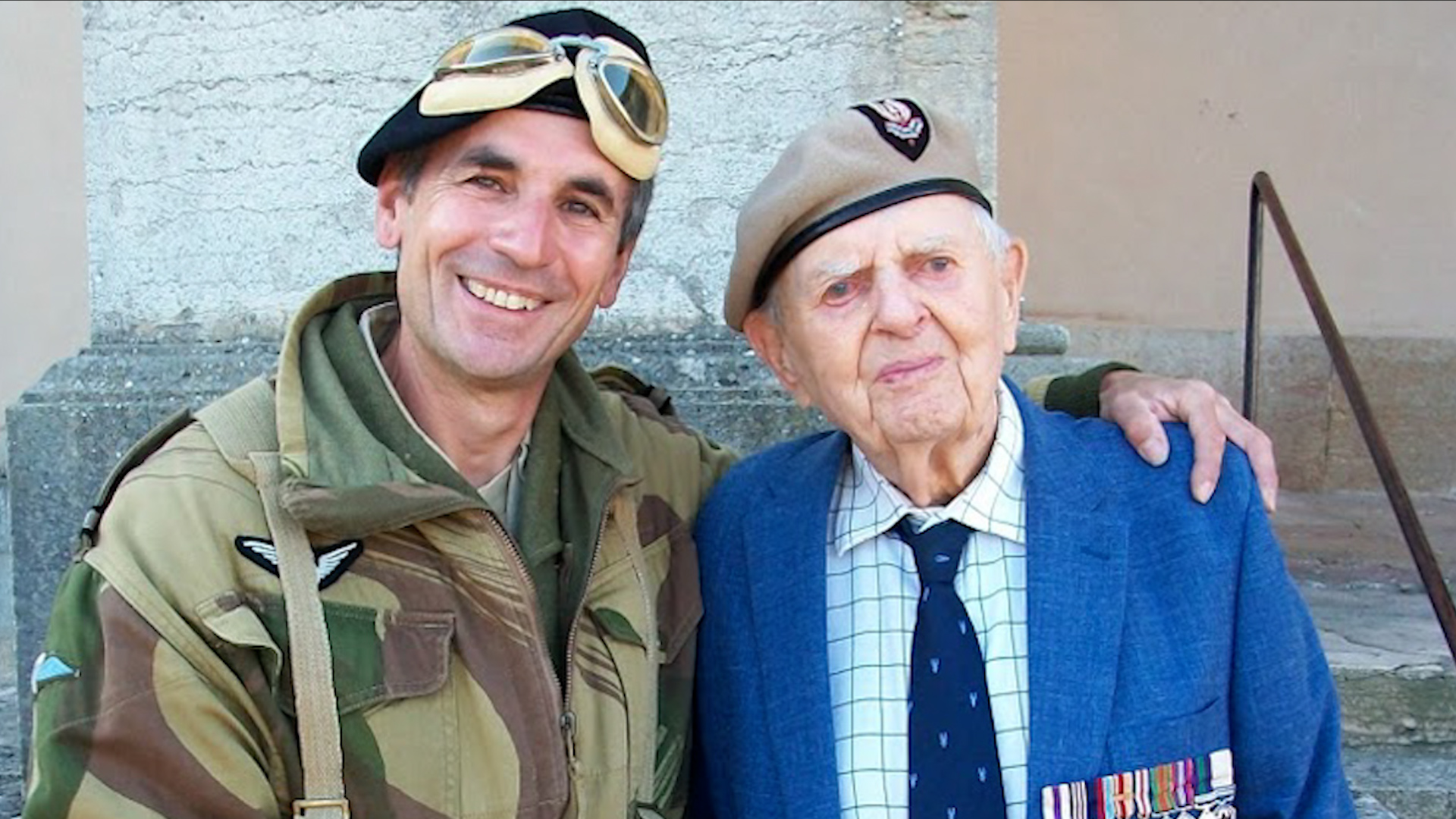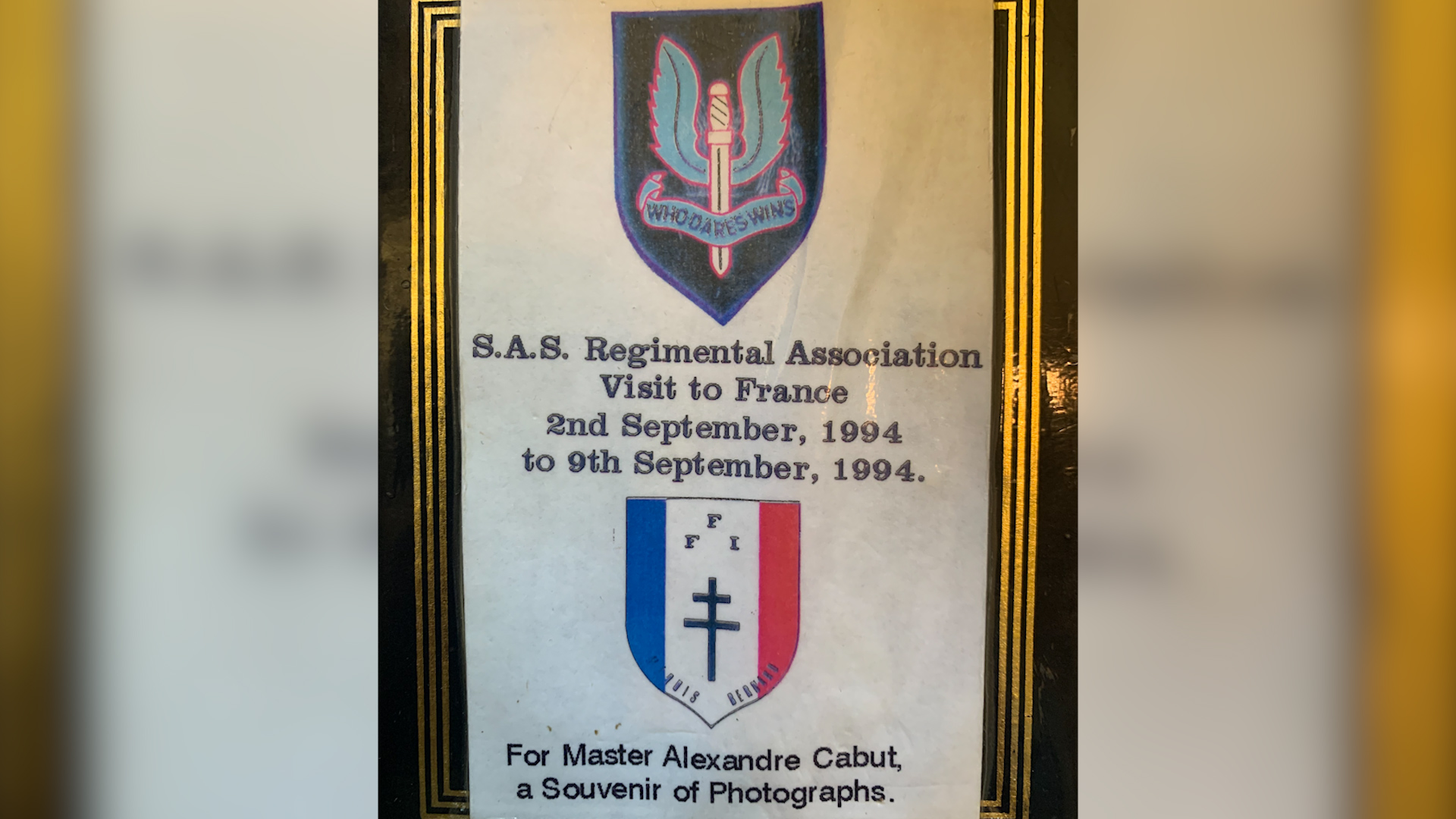
The late, great Mike Sadler: Damien Lewis' tribute to a founding member of the SAS

Author Damien Lewis has spent his career meeting and speaking with heroic Second World War veterans and Mike Sadler - the last remaining original member of the SAS - is one of them. In a piece for Forces News, Damien pays tribute to the legendary figure who was a man of honour as well as incredible courage.
Meeting and interviewing any of the last surviving WW2 SAS veterans is an immense privilege, as I have done with many.
Recently, we lost one of the most iconic and legendary figures of all – Major Willis Mike Sadler, MC MM.
This week, a memorial service will be held for him, following his death on 4 January at the age of 103.
Amazingly, Sadler served not only in one elite unit, the SAS, but prior to that with the Long Range Desert Group (LRDG), the North African desert reconnaissance and intelligence-gathering specialists.
In many ways, the LRDG were the desert warfare pioneers. They predated the SAS and much of their tradecraft and skills inspired David Stirling, the SAS originator, and the few dozen men who founded the unit alongside him, in the burning desert sands of the summer of 1941.
Although not present at the SAS's outset, Sadler was made an honorary SAS Original – those few who invented a whole new means to take the fight to the enemy, in shoot 'n' scoot raids of immense daring deep behind enemy lines.
Sadler earned a place in their exalted number due to his unique and critical contribution to the early SAS.

When operating across the vast, deserted moonscape of the Sahara – which was largely unmapped, waterless and feared by all – navigation was the key to survival and success on all levels.
Sadler would prove to be a desert navigator without equal.
He seemed to possess a superhuman instinct for finding his way across hundreds of kilometres of towering sand dune seas, endless gravel plains, punishing mountains and sun-scorched rock formations, so much of which appeared to be the same.
But not to Sadler, it seemed.
Time and again, with an unerring sixth sense, he led SAS patrols in their Willys Jeeps, bristling with quick-firing Vickers K machine guns, from their deep-desert oasis base to hit enemy aerodromes and supply lines, after which he would repeat the incredible performance, steering them back to friendly lines.
More often than not these SAS 'jeeping' patrols were hunted by the enemy, their warplanes scouring the desert for the wraith-like British raiders.
Sadler had to combine his pinpoint-accurate navigation skills with an ability to remain tuned in to the enemy threat, always mindful of where might offer cover from enemy warplanes.
It was a deadly game of cat-and-mouse, one that Sadler tended to win.
Born and educated in Britain, Sadler was living and working in Rhodesia (today's Zimbabwe) before the Second World War.
Volunteering for the military at the war's outbreak, he first fought in East and North Africa, where one of his defining characteristics came to the fore.
He had an unwavering moral compass – a sense of right and wrong – that could not be gainsaid, and he cared for the welfare of his men no matter what.
That combination, added to his magical-seeming navigational skills, made him an especially popular and esteemed officer.

During his pre-LRDG days, he was ordered by a superior officer to make his men sleep in their boots, so they were "always ready for action".
Sadler refused to comply, knowing how resented such a diktat would prove.
When threatened with demotion, Sadler struck first – renouncing his officer's commission and returning to the ranks. For Sadler, his integrity and standing tall in the eyes of his men mattered more than any rank or privilege.
Sadler volunteered for the LRDG upon overhearing veterans of the unit chatting about their exploits in a Cairo bar.
A desert and navigation natural, he learned his early tradecraft from a former merchant seaman. It was peculiarly apposite.
Charting a path through vast seas of sand or rock, using readings from the sun, moon and stars to do so had much in common with ocean navigation.
Both required steering a course through largely identical terrain, where a fraction of a mistake very often would prove fatal.

Sadler found the tradecraft of desert navigation fascinating, knowing he had a natural feel for it.
In December 1941, his skills and confidence were tested to the extreme. He was charged to steer the barely nascent SAS on their inaugural raid, against the Sirte and Tamet airbases in North Africa.
Crammed with German and Italian warplanes, this mission was make-or-break for the SAS.
Sadler led a convoy manned both by David Stirling, the SAS founder, and Blair 'Paddy' Mayne, Stirling's key deputy. With his trademark calm and humility – he was never one to brag – Sadler guided the patrol to their targets.
While Stirling's airbase, Sirte, proved devoid of warplanes, Mayne's at Tamet was the opposite.
Under the cloak of night, Mayne led his force on foot into the heart of that airbase, where they shot up the officer's mess – crammed with enemy pilots – and then blew apart several dozen warplanes.
Not long after that, Stirling declared Sadler the SAS's chief navigator and an SAS Original.
In perhaps his most legendary desert exploit, Sadler led a mass convoy of two dozen heavily armed SAS jeeps to attack Sidi Haneish Aerodrome in July 1942.
By then, almost a year into SAS operations, the enemy had got wise to the SAS's tactics – the 'ghost raiders' who struck and then vanished like cats in the night.
Accordingly, they had engirdled their airbases with thick fences, placing around-the-clock watches on their fighters and bombers, deploying guard dogs plus armoured car hunter-patrols.

At Sidi Haneish, Stirling's answer was to use a mass-jeep attack to crowbar open those defences.
To achieve that, and to strike by surprise – which was utterly crucial – Sadler had to steer the vast jeep convoy across hundreds of kilometres of desert, moving under cover of darkness.
Bringing the lead jeeps to a point where he declared the airbase lay just a short distance away, there was zero sign of any enemy presence. Many doubted that Sadler was right.
But it was then that an enemy warplane thundered low overhead and came in to land at the airbase, the runway lights being illuminated and blazing out in the darkness.
Just as Sadler had indicated, the airbase lay right before them.
The story of the raid on Sidi Haneish, and all of Sadler and his comrades' incredible exploits, is related in my book SAS Brothers In Arms.
During the SAS's time in North Africa, they accounted for some 400 enemy warplanes on the ground, more than the RAF had destroyed in the air over North Africa.
It was an incredible achievement, in which Sadler played a vital part, and it gave birth to the SAS legend.
Prior to the Axis defeat in North Africa, Sadler faced his greatest challenge.
Embarked upon a January 1943 patrol commanded by David Stirling, one of breathtaking scope and daring, the SAS aimed to be the first of the 8th Army's forces to cross the entire North African desert, to link up with the 1st Army, recently landed in Algeria and Morocco under Operation Torch.
In doing so they sought to blaze a trail by which the 8th Army could outflank Rommel's final defences.
Unbeknown to them, German General Erwin Rommel – incensed at the successes scored by the SAS, and even more by the impact on the morale of his men – had formed an elite 500-strong force to hunt down the desert raiders.
Made up of paratroopers, and trained with captured SAS jeeps to gauge SAS skills and capabilities, Stirling's patrol was ambushed and captured. But three figures slipped the net. Crucially, one was Mike Sadler.
Sadler proceeded to lead his fellow escapees across 100 miles of blistering desert, during which they were forced to fight off marauding bands of desert nomads, before finally reaching 1st Army lines.
Once the 1st Army commanders realised just who and what Sadler and his comrades were, he was spirited by air to headquarters, from where he would guide Allied forces in an outflanking move, over the very desert from which he had just escaped.
For that incredible escape – which is told in detail in my book SAS Great Escapes II – Sadler would be awarded a Military Medal (MM).
He would go on to earn a Military Cross (MC) in the summer of 1940 in France, when navigating Paddy Mayne, by then the commander of 1 SAS, across the length and breadth of France, during which they would cross enemy lines at least four times.

Subsequently, he would take on one of 1 SAS's most sensitive tasks, being appointed as Mayne's intelligence officer, and going on to investigate Nazi war crimes perpetrated against the SAS.
In short, many of those taken captive in France had been murdered under Hitler's soon-to-be notorious 'Commando Order' – an illegal decree that all such special operatives were to be kept alive only for so long as they could prove useful to the Gestapo and SS, after which they were to be shot out of hand.
In one such example of Sadler's role at this time, in July 1944 an SAS patrol led by Captain Patrick Garstin was ambushed by the enemy, and the survivors – some terribly wounded – were taken to the Avenue Foch, the Paris headquarters of the Gestapo.
Tortured and interrogated, they were forced to dress in civilian clothes and sent to face a firing squad in a dark woodland, at Hitler's orders.
When news reached Mayne, he dispatched Sadler to France to investigate.
There he discovered the mass grave, containing Garstin and his comrades' bullet-riddled corpses.
Sadler ensured that the bodies were exhumed, identified and reburied with full military honours before he turned his focus to tracking down the perpetrators of this war crime. It was but one of many that he would investigate over 1944-5.
Unsurprisingly, Major Sadler stood tall in the eyes of his SAS comrades of all ranks until the end of the war.
Also unsurprisingly, his legacy and legendary repute lived on long after the war's end.
He was a stalwart at SAS and LRDG reunions, and at services to commemorate the fallen held yearly across France and further afield.
:: Damien Lewis's latest book SAS Great Escapes 3 is published by Quercus Books on 23 May.
He will be doing a book tour around publication. To buy tickets see the link here.









